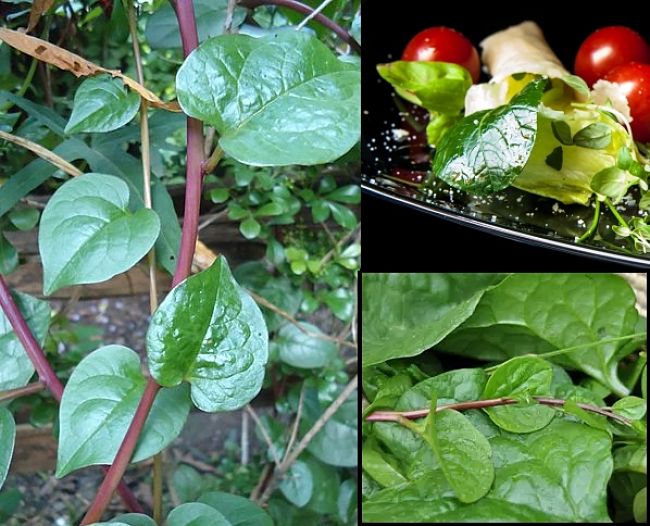Planting and Growing Guide for Malabar greens (Basella alba)
Description
Malabar greens is a perennial vine originally from tropical Asia and Africa that is widely used as a leaf vegetable. It is also known as Ceylon spinach, vine spinach, creeping spinach or buffalo spinach. There are green and red stem varieties. It can be grown as a Spring/Summer annual form seeds or cuttings. The shoots and leaves can be harvested continuously and taste like conventional spinach. They can be eaten raw or cooked - lightly steamed, or used in stir-fries. They can be grown in large pots using a ring of wire mesh for support. They can also be grown up a fence or on a trellis or frame in the garden. Sow the seeds well spaced. They will germinate in 2-3 weeks.
Cook the shoot tips and leaves by tossing with garlic and other greens in a hot pan with olive oil for a minute or two. Light spinach it should only be lightly cooked. The berries yield a red dye that can be used to colour desserts, cakes and jelly. It is delicious addition to other greens in tossed salads.
Planting Guide
Seed Depth: Plant seeds about 10 mm (1/2 inch) in prepared areas or large pots with supporting wire frames or trellises. Scarify the seed helps germination. Sow seeds 2-3 weeks after the last frost is expected. Can be started in pots earlier and transplanted. Can be grown from cuttings.
Space between plants: Space plants about 20-30 cm (9-12 inches) apart. Space rows at 30-50 cm (12-18 inches)
Harvest Time: Harvest in about 4-6 weeks. Leaves and shoots can be picked continuously as the vines grow
Hints:
- Malabar greens vines die back in winter in cold areas and self-seed readily. The vines need to be kept under control to prevent them becoming an invasive weed.
- Regularly remove the flowers as they appear to encourage new shoots to grow.
- Feed regularly with liquid manure or fish emulsion, or well-rotted compost added as a mulch.
- Malabar greens requires full to partially shaded areas, where there is ample room for the vines to spread
- Malabar greens does best in fertile, well-drained neutral pH soil, with a covering of mulch
- Regular watering is needed, to keep growth vigorous, which ensures the shoots are tender and firm. Once established water daily in hot weather
- Frost tender and needs warm weather

Disclaimer: The PlantWhatWhen vegetable planting guide is only designed for use as a very general reference for home gardening purposes. It is not to be used for farming, markets or commercial activities of any kind whatsoever. We take absolutely no responsibility for the accuracy and adequacy of the information provided on this site. We recommend that you consider your local climate, weather patterns and conditions when deciding what and when to plant in your home garden. It's entirely your own decision. Happy Gardening and Best Wishes!